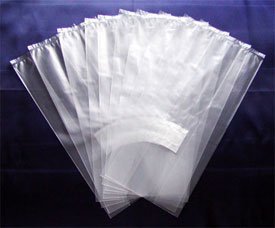Breathable polypropylene bags with different filter types are widely used for spawn production. In farms where spawn is produced for farm use, a stand up bag is generally used. Small bags of 10 by 8 by 30 cm gusseted with a filter 10 cm down from top are common. Larger bags with a 20 by 12 cm foot print and 50 cm high are also commonly used.
For Agaricus spawn, grain spawn, filters of the PP non woven with PP membrane are used. The filter are low gas transmission filters that retain CO2 . Unicorn type M filter and Celgard are examples of this filter. A preferred pore size is 0.2 micron.
Breathable Polypropylene bags with filters are also called PP filter bag for mushroom cultivation.
Shiitake and pleurotus and most specialty mushrooms prefer a higher gas exchange filter.
Unicorn type OB, and Santomi Plabag uses a PP non woven filter, and Van Leer has a similar filter as Santomi. Pore size remain at 0.2 or lower, but the efficiency of the filter (larger number of pores per unit area) allow higher gas exchange. By using PP mushroom bags and filters, substrate is autoclaved in these bags, and because these bags are of higher cost and more spawn is produced per bag, a more reliable bag must be fabricated. With PP resin, different proprietary raw material mix is used to modify PP to reduce oxidation and add to the PP resin a modifier to make the final autoclaved bag retain impact strength, or more stretch. Thus modified, bags will less likely have holes, and sealing temperature is widened.
It is also important to have a clear bag to observe any instance of contamination. Some bag fabricators use a special resin developed for hospital waste, this resin increases sealing temperature and reduce clarity, thus not a desirable bag for spawn production. By reducing oxidation, PP film retains its original properties and less hydro carbon gas is given off.

没有评论:
发表评论